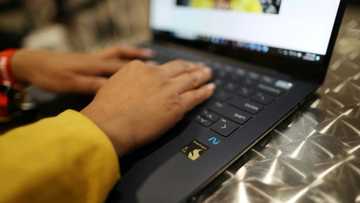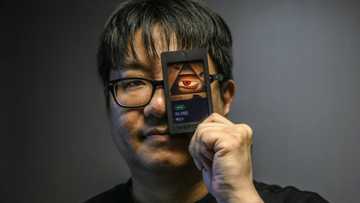Mouse shakers, power naps: Corporate America fights 'keyboard fraud'

Source: AFP
PAY ATTENTION: Legit.ng Entertainment Awards 2024 Voting Is Alive. Choose the best entertainer in 15 categories for FREE.
A US banking giant fired more than a dozen employees for "simulating keyboard activity," highlighting a battle within productivity-obsessed corporate America to tame a culture of faking work with gizmos such as mouse jigglers.
The sackings by Wells Fargo come as employers use sophisticated tools -- popularly called "tattleware" or "bossware" -- on company-issued devices to monitor productivity in the age of hybrid work that took off after the Covid-19 pandemic.
Some workers seek to outsmart them with tools such as mouse movers -- which simulate cursor movement, preventing their devices from going into sleep mode and making them appear active when they may actually be getting a power nap or doing laundry.
The cat-and-mouse game -- no pun intended -- has spurred a wider debate in corporate America about whether screentime and the click-clacking of keyboards are effective yardsticks to measure productivity amid a boom in remote work.
The Well Fargo workers were dismissed last month following a probe of allegations involving "simulation of keyboard activity creating impression of active work," Bloomberg reported, citing the company's disclosures to financial regulators.
Wells Fargo "holds employees to the highest standards and does not tolerate unethical behavior," the company said in a statement, without elaborating.
PAY ATTENTION: Сheck out news that is picked exactly for YOU ➡️ find the “Recommended for you” block on the home page and enjoy!
'Productivity theater'
Multiple US surveys show that demand for employee monitoring software -- systems that track activity via desktop monitoring, keystroke tracking and even GPS location -- has shot up since the pandemic.
One Florida-based social media marketing company, according to the Harvard Business Review (HBR), installed software on employees' devices that took screenshots of their desktop every 10 minutes.
Such surveillance has given rise to what human resource professionals call "productivity theater" –- in which some employees seek to project that they are busy while doing nothing constructive.
A series of "tutorials" on platforms including TikTok and YouTube even teach how to appear busy on computer screens, which generally go black after a few minutes of inactivity.
Those include fake PowerPoint techniques for "when you need to take your afternoon nap."
"Just hit 'slideshow' and you're good," Sho Dewan, an influencer who identifies himself as an "ex-recruiter sharing HR secrets," said in a TikTok video that garnered millions of views.
The device will stay "active" while the presentation is on, he said flashing a thumbs up before a slide that read: "Really important work meeting."
Among the hundreds of comments under the video, one viewer quipped: "At one point I taped a mouse to an oscillating fan -- why couldn't I have found (this) sooner?"
'Seriously backfire'
Another trick noted in the tutorials involves opening a notes application and placing a lock on any keyboard letter. The worker thereby appears active to tracking devices while the page fills up with row after row of the same letter.
But the most popular trick appears to be the deployment of mouse jigglers, widely available on Amazon for as little as $11.
"Push the button when you're getting up from your desk and the cursor travels randomly around the screen -- for hours, if needed!" reads one product review on Amazon.
But there remains a serious risk of getting caught.
In one viral Reddit post titled "My manager caught me with a mouse jiggler," an employee noted that the transgression was the "last straw" after he excused himself from several meetings citing "power outages" and "thunderstorms."
He noted that he had installed a software-based jiggler, prompting some readers to suggest using "non detectable" physical ones.
HR professionals warn of the dangers of surveilling employees and confusing keyboard activity with productivity.
One survey cited by HBR suggested that secretly monitoring employees can "seriously backfire."
"We found that monitored employees were substantially more likely to take unapproved breaks, disregard instructions, damage workplace property, steal office equipment, and purposefully work at a slow pace," the HBR report said.
A.J. Mizes, chief executive of the consulting firm Human Reach, said the use of mouse jigglers demonstrated a "work culture driven by metrics rather than meaningful productivity and human connection."
"There has been a growing troubling trend of excessive surveillance in corporate America," Mizes told AFP.
"Rather than stirring up innovation and trust, this surveillance approach will only push employees to find additional ways to appear busy."
PAY ATTENTION: Stay Informed and follow us on Google News!
Source: AFP






